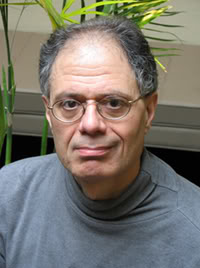As everyone knows, the future of the book is in dispute. One side thinks that the speed, connectivity, and portability of electronic media, combined with the entertainment industry’s relentless assault on our attention span and powers of concentration, will eventually make books –difficult ones, anyway – obsolete. The other side looks at the sales figures and scoffs: people are reading, or at least buying, more books than ever, so what’s the problem? I’m with the pessimists: in the long run, human auto-lobotomization is inevitable. Still, books will be around for a while, no doubt. And since, for those who know how to read great literature, there is no higher pleasure, it’s only right that the next generation at least be given the chance to learn. Hence the importance of Mark Edmundson’s “Why Read?”
Edmundson is a respected member of an excellent English department (the University of Virginia) who grew dissatisfied with his pedagogical success. Student evaluations consistently described his classes as enjoyable, entertaining, interesting, a pleasant experience. What was missing, he felt, was any sense that they had been changed, gripped, shaken by their encounters with literature and philosophy. The contrast with the seismic effects of reading in his own early life started him thinking. Why were his students apparently less vulnerable than he had been to painful doubts, less open to ecstatic discoveries? Where had they learned to keep at arm’s length the existential dilemmas, the traumas of self-definition, incomparably rendered in poetry and prose fiction, that had sent so many bravely imaginative young people in all preceding generations deep into themselves, or adrift in the world, or, sometimes, right over the edge? How had they become so damned cool?
His answer is that contemporary students’ characteristically hip, jaded, wary, knowing, ironic, shallow, sensibility, their sometimes exasperating sense of entitlement, and their apparent immunity to idiosyncrasy and passion are the inevitable results of growing up in a culture of consumption. In two short, incisive early chapters, “Total Entertainment All the Time” and “Cool School,” Edmundson speculates that television evokes several typical responses. With the presiding, framing figures – the news anchors, announcers, talk-show hosts, Dave and Jay and Conan, usually “laid-back, tranquil, self-contained, and self-assured,” free of illusion or enthusiasm – viewers are encouraged to identify. Against inanity and spectacle – game shows, extreme sports, “reality” TV – we react defensively into the same attitude: worldly, skeptical, and amused. Even more important is the unceasing barrage of “persona” ads, pounding home the “central thrust of postmillennial consumer culture: buy in order to be.”
The customer mentality is reinforced by the fact that college is currently a buyer’s market. Universities expanded aggressively during the baby boom years; now they must compete for students. “Is it a surprise, then, that this generation of students – steeped in consumer culture before they go off to school, treated as potent customers by the university well before they arrive, then pandered to from day one – are inclined to see the books they read as a string of entertainments to be enjoyed without effort or languidly cast aside?”
There’s often another obstacle, this one internal to the university, between students and the life-altering, soul-making powers of literature. A wave of theory has engulfed English departments in the last three decades. It may (or may not) have enriched the professional study of literature; but it is of very little use, Edmundson argues persuasively, to amateurs. Theory has made literature newly available to scholars as a resource for intellectual history, social theory, and philosophical analysis. What it can’t do is help students experience literature as what Edmundson somewhat gingerly calls “inspiration,” or more simply, “the source for a way of life.”
Most of “Why Read?” tries to show, from Edmundson’s classroom experience, how they might be helped to do that. He’s an engaging teacher, earnest, knowledgeable, witty, and (very important if you’re trying to get students to open up) not concerned to show off. From his discussions of how to teach the Iliad, “Hamlet,” “Emma,” “Tintern Abbey,” and “The Portrait of a Lady,” I learned something useful about each of those works, and about life. If I were an undergraduate, I think I’d rather be in his classroom than, say, Harold Bloom’s.
I certainly wish I’d been in Stanley Cavell’s classroom when he was delivering the lectures that make up “Cities of Words.” Cavell is a philosopher and an aficionado of Hollywood marriage comedies of the 1930s and 40s – “The Philadelphia Story,” “Adam’s Rib,” “His Girl Friday,” “The Awful Truth,” etc. – about which he has written more than one renowned book. In a legendary Harvard course called “Moral Perfectionism,” Cavell alternated lectures on the great philosophers with commentaries on these great films, in which he found “a strain of moral urgency” prompted by “the question of how they shall live their lives, what kind of persons they aspire to be.” In each of these movies, just as in great literature, “a crisis forces an examination of one’s life that calls for a transformation or reorienting of it.”
It was an inspired idea; the lectures, though sometimes laborious, are obviously a labor of love; and the course might well have been entitled “Why Read Philosophy?” Or, with equal justice, “Wisdom at the Movies.”
[END]
